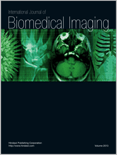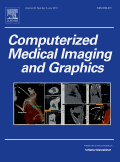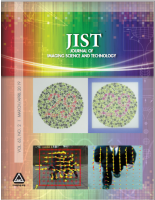
International Journal of Biomedical Imaging
Scope & Guideline
Connecting Global Researchers in Biomedical Imaging
Introduction
Aims and Scopes
- Clinical Applications of Imaging Techniques:
The journal emphasizes research that applies various imaging modalities (e.g., MRI, CT, ultrasound) in clinical settings, demonstrating their effectiveness in diagnosing and managing diseases. - Advancements in Image Processing Algorithms:
A significant focus is placed on the development and enhancement of algorithms for image segmentation, classification, and reconstruction, particularly using machine learning and deep learning techniques. - Multimodal Imaging Approaches:
The journal promotes studies that utilize combinations of different imaging techniques to provide comprehensive insights into health conditions, thus enhancing diagnostic accuracy. - Innovative Imaging Technologies:
Research on new imaging technologies, such as fiber-optic microscopy and advanced contrast agents, is a core area of interest, showcasing novel applications and methodologies. - Quantitative Imaging Biomarkers:
The journal encourages the exploration of quantitative measures derived from imaging data that can serve as biomarkers for disease progression and treatment response.
Trending and Emerging
- Artificial Intelligence in Medical Imaging:
There is a marked increase in research exploring the application of AI and deep learning for image analysis, classification, and segmentation, highlighting its potential to revolutionize diagnostics. - COVID-19 Related Imaging Research:
Research addressing imaging techniques for the detection and monitoring of COVID-19 has surged, showcasing the journal's responsiveness to global health challenges and the role of imaging in pandemic management. - Integration of Imaging with Other Diagnostic Modalities:
Emerging studies are increasingly focusing on the integration of imaging data with other clinical data (e.g., genetic, biochemical) to enhance diagnostic accuracy and patient management. - Real-time Imaging Techniques:
There is a growing trend towards real-time imaging applications, particularly in surgical and emergency settings, reflecting the demand for immediate diagnostic capabilities. - Enhanced Imaging Techniques for Specific Conditions:
Research is increasingly targeting specific diseases, such as cancer and cardiovascular diseases, with innovative imaging approaches tailored to improve detection and treatment monitoring.
Declining or Waning
- Traditional Imaging Techniques without AI Integration:
There has been a noticeable decline in papers focused solely on traditional imaging techniques without the incorporation of AI or machine learning, as the field increasingly moves towards automated and intelligent imaging solutions. - Invasive Imaging Procedures:
Research focusing on invasive imaging methods, such as certain surgical imaging techniques, has become less frequent, possibly due to advancements in non-invasive alternatives that provide similar diagnostic capabilities. - Basic Image Quality Assessment Studies:
Papers that solely address basic image quality assessment without novel contributions or applications have decreased, reflecting a shift toward more complex and applied research.
Similar Journals

Traitement du Signal
Empowering Innovation in Electrical EngineeringTraitement du Signal, published by the INT Information & Engineering Technology Association, is a distinguished journal that serves the vibrant field of Electrical and Electronic Engineering. With an ISSN of 0765-0019 and an E-ISSN of 1958-5608, this journal has made significant contributions to the discipline since its inception. While it currently operates under a non-open access model, it maintains its commitment to disseminating valuable research from 2010 to 2023, despite its recent discontinuation in Scopus coverage. Recognized in the third quartile (Q3) of the category in 2022, the journal provides a platform for researchers, professionals, and students to publish their findings on topics such as signal processing, communications, and related technologies. By curating high-quality articles, Traitement du Signal plays a crucial role in advancing knowledge and fostering innovation within the electrical and electronic engineering community.

European Radiology Experimental
Bridging Clinical Practice and Cutting-Edge ResearchEuropean Radiology Experimental is a premier open-access journal published by Springer Wien, dedicated to advancing the field of radiology through innovative research and experimentation. Since its establishment in 2017, the journal has quickly gained recognition, evidenced by its impressive Q1 ranking in the Radiology, Nuclear Medicine and Imaging category, and its placement within the top 83rd percentile of the Scopus rankings. Based in the United Kingdom, this journal aims to bridge the gap between clinical practice and cutting-edge research, providing a platform for rigorous peer-reviewed articles that explore new methodologies, technologies, and insights in radiological sciences. With a commitment to open access, European Radiology Experimental ensures that its content is readily accessible to a global audience, supporting the dissemination of knowledge and fostering collaborations among researchers, professionals, and students in the medical imaging community. As it progresses through its convergence years, the journal continues to play a vital role in shaping the future of radiological research and practice.

COMPUTERIZED MEDICAL IMAGING AND GRAPHICS
Pioneering Insights in Computerized Medical ImagingCOMPUTERIZED MEDICAL IMAGING AND GRAPHICS, published by PERGAMON-ELSEVIER SCIENCE LTD, is a leading international journal that has significantly contributed to the fields of medical imaging, graphics, and informatics since its establishment in 1988. With a remarkable reputation reflected in its Q1 quartile rankings across multiple categories—including Computer Graphics, Health Informatics, and Radiology—this journal maintains a prominent position in the academic community, evidenced by its Scopus rankings where it ranks in the top percentile across various disciplines. The journal aims to advance knowledge and innovation within the intersection of technology and healthcare, featuring high-quality research that addresses contemporary challenges in medical imaging and graphical methodologies. With no open access options currently available, this journal serves as a crucial resource for researchers, professionals, and students who are at the forefront of advancing imaging technology and its applications in medicine.

EUROPEAN JOURNAL OF RADIOLOGY
Pioneering Insights for Radiology ProfessionalsThe European Journal of Radiology, published by Elsevier Ireland Ltd, is a premier peer-reviewed journal in the fields of radiology, nuclear medicine, and imaging. Established in 1981, it has carved a significant niche within the academic community, showcasing innovative research that enhances medical imaging practices and improves patient care. With an impressive ranking in the Q1 category for both Medicine (miscellaneous) and Radiology, Nuclear Medicine, and Imaging in 2023, the journal is recognized globally for its commitment to advancing scientific knowledge and improving imaging methodologies. The journal's Scopus ranking of #60/333, placing it in the 82nd percentile, underlines its reputation for high-quality research and scholarly contributions. While traditionally a subscription-based journal, it continually evolves to meet the demands of the academic landscape, aiming to bridge the gap between research and clinical practice. Researchers, healthcare professionals, and students alike can benefit from exploring its extensive archives and current publications, which are curated to foster education and innovation in the medical imaging domain.

JOURNAL OF IMAGING SCIENCE AND TECHNOLOGY
Transforming Ideas into Imaging BreakthroughsJOURNAL OF IMAGING SCIENCE AND TECHNOLOGY, published by I S & T - SOC IMAGING SCIENCE TECHNOLOGY, is a pivotal resource in the realms of imaging science, optics, and materials. With its ISSN 1062-3701 and E-ISSN 1943-3522, this journal has been disseminating influential research since 1993 and continues to be a vital platform for scholars up to 2024. Despite its varied quartile rankings across disciplines—such as Q4 in Atomic and Molecular Physics and Optics, and Q3 in Chemistry (Miscellaneous) and Electronic, Optical and Magnetic Materials—it provides an essential forum for innovative ideas and advancements. The journal’s focus on interdisciplinary connections encourages collaboration among researchers in the fields of chemistry, computer science, and physics. Researchers, professionals, and students interested in exploring the latest imaging technologies and methodologies will find invaluable insights within its pages, making it a significant addition to their academic libraries.

Journal of X-Ray Science and Technology
Transforming the Future of X-Ray ScienceThe Journal of X-Ray Science and Technology, published by IOS PRESS, serves as a premier platform for researchers and professionals dedicated to advancements in the fields related to X-ray science, imaging techniques, and instrumentation. With an ISSN of 0895-3996 and an E-ISSN of 1095-9114, this journal has established itself as a vital resource since its inception in 1989. The journal has transitioned through multiple publishing phases, currently converging its years of publication from 2001 to 2024, thereby enriching the scientific community’s understanding across various categories, notably in the second quartile (Q2) of Condensed Matter Physics, Electrical and Electronic Engineering, Instrumentation, Radiation, and Radiology, Nuclear Medicine and Imaging as of 2023.
In addition to its commendable Scopus rankings—which highlight its relevance and impact within the medical and physical sciences—the journal emphasizes the dissemination of impactful research, innovative techniques, and collaborative efforts within the X-ray scientific community. Despite being a subscription-based journal, its contributions are crucial for those aiming to stay at the forefront of research and technological development in these rapidly evolving fields.

JOURNAL OF MATHEMATICAL IMAGING AND VISION
Transforming Research into Real-World ApplicationsJOURNAL OF MATHEMATICAL IMAGING AND VISION, published by Springer, stands as a significant platform for advancing the fields of applied mathematics, computer vision, and pattern recognition, among others. With an ISSN of 0924-9907 and an E-ISSN of 1573-7683, this esteemed journal is based in the Netherlands and has been contributing to the scholarly discourse since its inception in 1992, with a converged focus through 2024. It has achieved reputable standings within several quartiles, including Q2 rankings across applied mathematics, geometry and topology, and condensed matter physics, reflecting its impact and relevance. Notably, the journal ranks within the top 5% in Geometry and Topology and maintains robust standings in Statistics and Probability. The JOURNAL OF MATHEMATICAL IMAGING AND VISION is dedicated to publishing high-quality research that bridges theoretical perspectives with practical applications, making it an essential resource for researchers, professionals, and students who are exploring the cutting-edge of mathematical imaging and its interdisciplinary applications.

MEDICAL IMAGE ANALYSIS
Exploring New Frontiers in Medical Imaging Excellence.MEDICAL IMAGE ANALYSIS, published by ELSEVIER, stands as a premier journal in the fields of computer science and medical imaging, particularly focusing on the intersection of Computer Graphics, Computer Vision, and Health Informatics. With an impressive impact factor and a consistent classification in the Q1 quartile across multiple domains including Radiology and Radiological Technology, this journal attracts high-quality research and innovative methodologies that significantly contribute to advancing medical practices and technology. Based in the Netherlands, and covering a gamut of topics from 1996 to 2025, it serves as a vital platform for disseminating cutting-edge studies aiming to enhance diagnostic accuracy and treatment planning through sophisticated imaging techniques. While it does not offer Open Access options, the journal’s rigorous peer-review process and high Scopus rankings—positioning it within the top percentiles across several categories—further solidify its reputation as an essential resource for researchers, professionals, and students committed to the evolution of medical imaging.

JOURNAL OF DIGITAL IMAGING
Transforming Insights into Digital Imaging ExcellenceJOURNAL OF DIGITAL IMAGING, published by Springer, is a premier journal dedicated to the field of digital imaging, encompassing significant developments in the intersecting disciplines of radiology, computer science applications, and ultrasound technology. With its impressive Q1 ranking in the categories of Radiology, Nuclear Medicine and Imaging, and Radiological and Ultrasound Technology, and a substantial Q2 ranking in Computer Science Applications, this journal is positioned at the forefront of research dissemination in these vital areas. The ISSN 0897-1889 and E-ISSN 1618-727X signify its broad reach and accessibility, while its Scopus rankings demonstrate its robust impact in the academic community, ranked #41/333 in Radiology and earning a notable 87th percentile status. Since its inception in 1988, the journal has served as a vital resource for researchers and professionals seeking to advance their understanding of digital imaging technologies and their applications. Although it does not currently offer open access options, it continues to foster scholarly dialogue and innovation, making it an indispensable platform for those committed to excellence in imaging science and technology.

IRBM
Empowering Research Excellence in Biomedical FieldsIRBM, published by Elsevier Science Inc, stands at the forefront of research in the domains of Biomedical Engineering and Biophysics, boasting impressively high rankings with a Q1 category in both fields according to the 2023 evaluations. With an effective focus on cutting-edge innovations and methodologies, IRBM provides a vital platform for researchers, professionals, and students alike seeking to disseminate and access groundbreaking findings and developments. Its strong presence in the Scopus database, with ranks of #12 in Biochemistry, Genetics and Molecular Biology and #42 in Biomedical Engineering, places it in the top percentile of impactful journals in the field, making it a crucial resource for advancing knowledge and fostering collaboration. While the journal maintains a traditional subscription model, it continues to attract a diverse readership eager for insightful studies and reviews that push the boundaries of science and engineering. With a projected convergence of years extending to 2024, IRBM promises to remain a significant contributor to the ongoing dialogue in the life sciences.